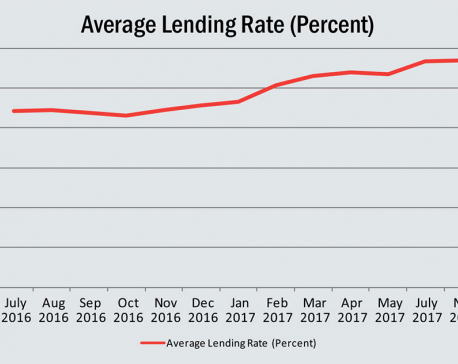
OR
Provision to lower share of institutional deposits
Banks likely to face difficulty in deposit collection
Published On: July 11, 2017 12:20 AM NPT By: Republica | @RepublicaNepal
KATHMANDU, July 11: The central bank's decision to reduce the share of institutional deposits to 45 percent of total deposits has dealt a serious blow to commercial banks which are already facing shortage of lendable funds.
The Monetary Policy for the Fiscal Year 2017/18, which was unveiled in Kathmandu on Sunday, brought down the limit of institutional deposits that a commercial bank can have.
As institutional deposit has remained a major source for bulk deposits for commercial banks, the new measure to further lower institutional deposit volume by at least 5 percentage points will require lenders to attract more individual depositors.
Currently, commercial banks can have institutional deposit of up to 50 percent of their total deposits.
The Nepal Rastra Bank (NRB) has given banks the deadline of mid-July, 2018 to bring down the share of institutional deposits to the new limit.
Banks are getting institutional deposits from corporations and organizations by offering higher interest rates compared to individual depositors. They used to pass on the cost of such higher rates on institutional deposits to borrowers.
Such discrimination between institutional and individual depositors has always been a major concern of the central bank. While banks have been offering up to 13 percent interest rate on fixed deposit for individuals, institutional depositors like insurance companies, Employees' Provident Fund, Citizen Investment Trust and other organizations have been getting 14 to 15 percent.
Bankers, however, say that the lowering of institutional deposits will make it difficult for them to arrange resources at a time when the government expenditure and remittance growth have remained sluggish.
“The new monetary policy has set credit growth target at 27 percent for the upcoming fiscal year. However, limiting the institutional deposits to 45 percent will make it difficult for banks to get lendable funds,” said Gyanendra Dhungana, the vice-president of Nepal Bankers' Association, told Repubica.
The decision of the central bank, however, will come as a boon for individual depositors as banks will have to offer higher interest rates to the public to attract them.
Meanwhile, the central bank has also introduced a provision whereby bank and financial institutions (BFIs) will have to fix lending rate for their depositors while opening fixed deposit account and interest rate on loans against fixed deposit receipt should not exceed the rate fixed while opening the account.
The new provision is expected to end the practice of depositors parking their savings at a lower rate and paying higher rates while borrowing by pledging the same deposit.
You May Like This

Credit crunch bedevils banks: Bank deposit rate at 13%, lending rate spikes to 16%
KATHMANDU, Dec 29: Due to lack of farsightedness and aggressive lending practices among banks and financial institutions (BFIs), credit is... Read More...

Banks on lending spree despite slow deposit growth
KATHMANDU, Dec 28: Slow deposit growth has not restrained banks from ramping up their loan disbursements, indicating that lendable funds in... Read More...

Conflict likely between provincial, local govts over revenue collection: Experts
KATHMANDU, April 26: Economists and fiscal federalization analysts have warned that conflict could break out between provincial and local governments over... Read More...





Just In
- Ties with Tehran
- CM Kandel requests Finance Minister Pun to put Karnali province in priority in upcoming budget
- Australia reduces TR visa age limit and duration as it implements stricter regulations for foreign students
- Govt aims to surpass Rs 10 trillion GDP mark in next five years
- Govt appoints 77 Liaison Officers for mountain climbing management for spring season
- EC decides to permit public vehicles to operate freely on day of by-election
- Fugitive arrested after 26 years
- Indian Potash Ltd secures contract to bring 30,000 tons of urea within 107 days













Leave A Comment